#university of queensland
Text
decide to show yall the video i made about ibises 4 years ago for homework
#ibis#brisbane#university of queensland#bushturkey#animals#explainer#birds#nature#thatshirleylee#australia#brush turkey
28 notes
·
View notes
Photo
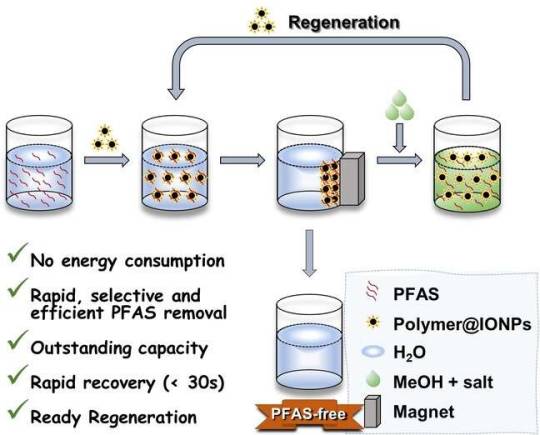
A magnetic method to clean PFAS contaminated water
Researchers at The University of Queensland have pioneered a simple, fast and effective technique to remove PFAS chemicals from water.
Using a magnet and a reusable absorption aid that they developed, polymer chemist Dr. Cheng Zhang and Ph.D. candidate Xiao Tan at the Australian Institute for Bioengineering and Nanotechnology have cleared 95 percent of per- and polyfluoroalkyl substances (PFAS) from contaminated water in under a minute.
"Removing PFAS chemicals from contaminated waters is urgently needed to safeguard public and environmental health," Dr. Zhang said, "But existing methods require machinery like pumps, take a lot of time and need their own power source."
"Our method shows it is possible to remove more of these chemicals in a way that is faster, cheaper, cleaner, and very simple. Because our process does not need electricity, it can be used in remote and off-grid communities."
Read more.
29 notes
·
View notes
Text
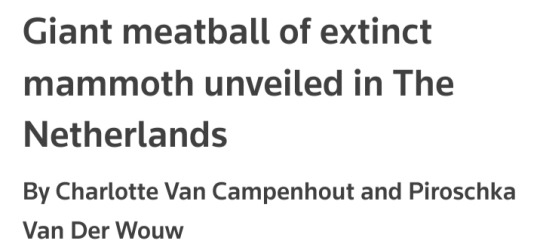
29 March 2023

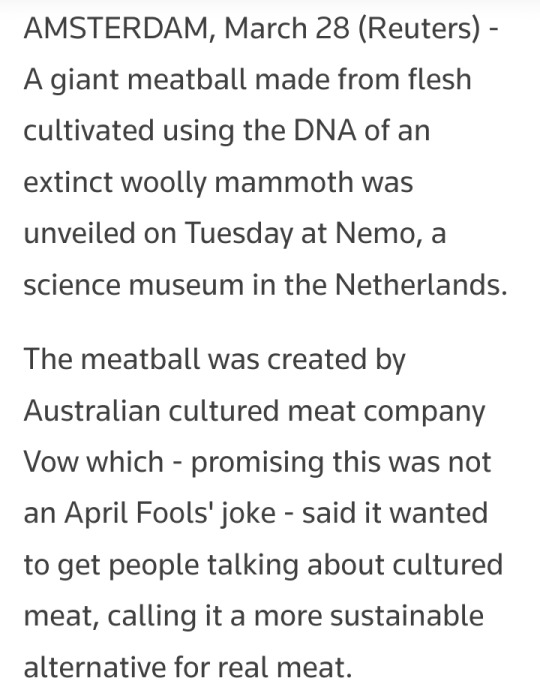
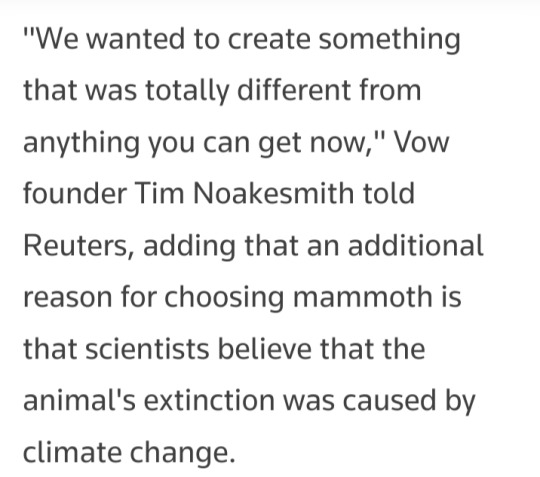
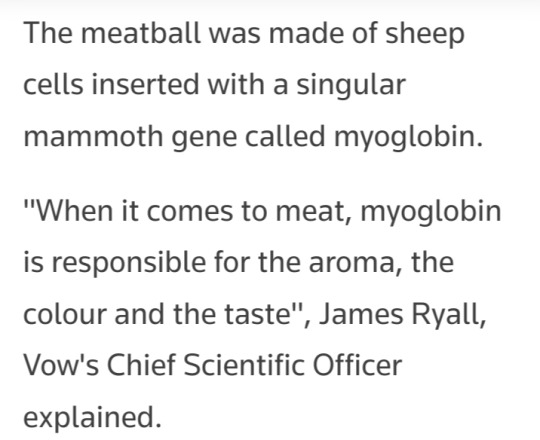
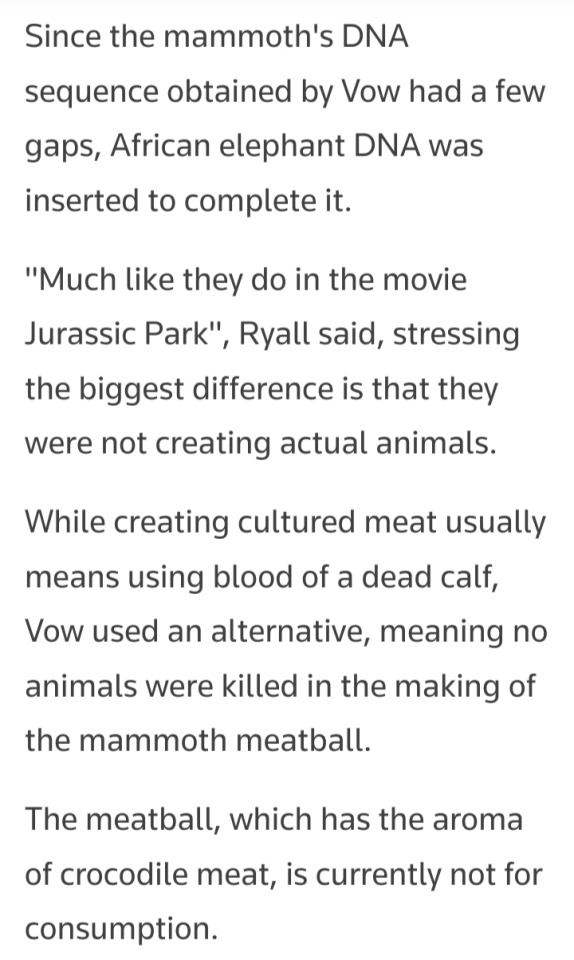

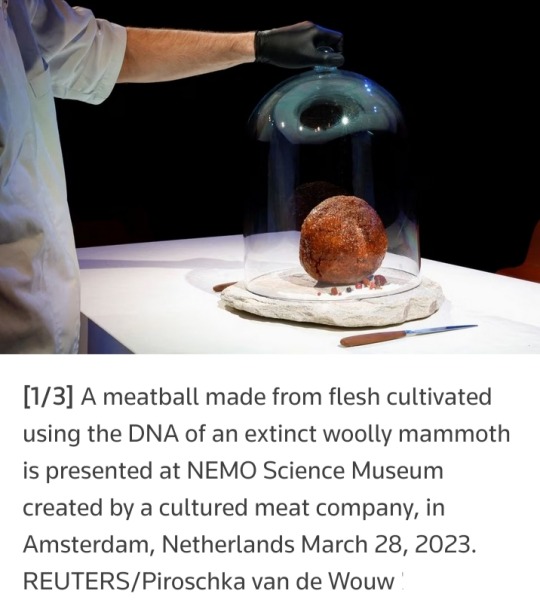
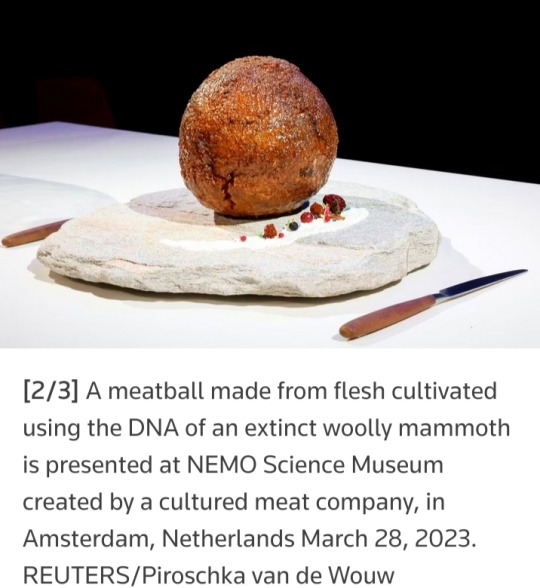
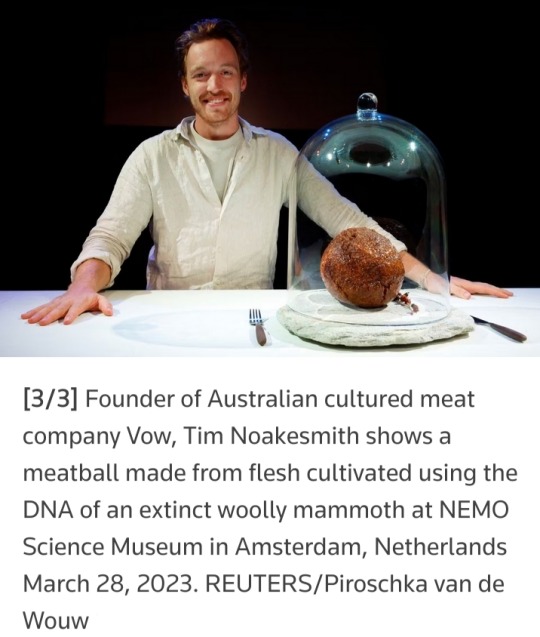
#Vow#Tim Noakesmith#extinct woolly mammoth#meatball#myoglobin#James Ryall#NEMO Science Museum#cultured meat#European Union#The Netherlands#mammoth meatball#Australian Institute for Bioengineering#University of Queensland#cultivated meat
15 notes
·
View notes
Text
youtube
We’re in a plant-filled laboratory and greenhouse at the St Lucia campus of University of Queensland. Here scientists are studiously observing hundreds of taro plants, trying to unlock the secrets of a new kind of taro that’s ready for the challenges of climate change-both at home and abroad, in an international research partnership with Fiji. Subscribe 🔔 http://ab.co/GA-subscribe
Taro (Colocasia esculenta cv.) is a tropical plant primarily grown for it’s sweet, starchy, edible corms, which are a hugely important food crop globally. A staple food in African, PNG, Asian, Caribbean and in particular Polynesian cultures, taro is believed to be one of the earliest cultivated plants. In 2018 global production was over 10 million tonnes.
Despite this global importance, the crop remains somewhat neglected in scientific research, particularly when compared to commodity crops like wheat. “Taro fits in what we call ‘orphan crops’, where all the research funding attention in Australia focuses on larger staple crops at the expense of others. It means we can make advances with these ‘orphan crops’ quickly, as there’s less improvements that have been made already” says plant physiology researcher at the University of Queensland, Dr Millicent Smith.
As part of the research project, Millicent and her team of researchers have been taking different taro plants (collected over a 20-year project!) and subjecting them to varying degrees of salinity, and seeing who survives.
Various taro seedlings are placed into containers not unlike self-watering pots, and then submitted to different degrees of salinity, precisely calibrated. Their reactions are recorded on cameras.
Parallel to this is detailed genetic mapping, looking to correlate particular genetic “markers” in taro with better performance in salinity. Once these genetic markers are identified, it makes it easier to identify them in other taro varieties.
“We observe how plants react to these salinity treatments. Plants can adjust to salinity osmotically (through diffusion of water/fluid-pH), but toxic ions still build up. Some plants like saltbush have a strategy for dealing with these ions. We’re finding out what the key traits are for taro to survive this salinity. We want to find the mechanism. Once we do that, we can bring any mechanism we find back through plant breeding”.
Salinity can reduce a plant’s ability to absorb water, resulting in symptoms like drought; stunted growth, poor germination, leaf burn, wilting and death. Salinity can also affect nutrient availability and uptake.
“We try to understand the process of how these plants were domesticated, and through that we’re trying to find traits that may have inadvertently selected against in the past, that may help”.
But the search for the taro of the future doesn’t stop within the confines of existing taro cultivars. All along the Brisbane River and surrounding tributaries, taro thrive on muddy embankments, thought to be escapees from gardens and farms.
The hope is these Brisbane-brand emancipated taro populations may hold the key to keep the crop going in a not-so-distant future climate.
Perhaps nowhere is the reality of climate change clearer than in the Pacific Ocean. As sea levels rise, small island nations like Tonga, Samoa and Fiji find themselves increasingly dealing with rising soil salinity. Coincidentally, many of these countries also rely on the taro as a staple food, grown largely in coastal areas. As salinity in arable areas increases, the future of this essential food is under threat.
Dr Brad Campbell is a molecular biologist at the University of Queensland which has been working in partnership with the national scientific body of Fiji to address this very problem.
The future of growing food in a changing climate is uncertain, but one thing is definite; crops everywhere will need to get by in harder, more changeable conditions. It’s humbling to think that the answer to feeding millions of people may be sitting on the muddy banks of the Brisbane River, waiting patiently to be discovered.
Featured Plant:
TARO - Colocasia esculenta cv.
Filmed on Turrbal & Yuggera Country | Brisbane, Qld
#gardening australia#Australia#solarpunk#plants#University of Queensland#scientists#plant physiology#Dr Millicent Smith#Millicent Smith#taro#climate crisis#Brisbane River#Pacific Ocean#sea water#Tonga#Samoa#fiji#Brad Campbell#biologist#food#Youtube
6 notes
·
View notes
Text
Eastern Brown Snake
Name: Eastern Brown Snake
Scientific Name: Pseudonaja textilis
Family: Elapidae
Size: 1.5 -2 meters (5 - 6.5 feet)
Habitat: Southern New Guinea and Australia
Fatalities: Around 2 fatal bites per year
Conservation Status: Least concern
Fun Fact: Brown snake bites (from all species) are the most common cause of snake bite death in Australia
Another member of the Elapidae family comes slithering out from its home of woodlands, grasslands, and heathlands in Northeastern Australia and Southern New Guinea. Like its family members of cobras, mambas, and coral snakes, it does have a big reputation in both emergency rooms and the herpetology world.
The Eastern Brown Snake exhibits brown coloration (wow who could’ve known) with patches of darker pigmentation and a medium length and slender build. Wow daily, so one of the most venomous snakes ever looks like every other snake? Yeah kinda :( . The most distinguishing characteristic of the Eastern or Common Brown Snake is its bite. The color of the Eastern Brown Snake is variable, like almost all other snakes. The most reliable way to identify Brown snakes and the method that herpetologists use is counting the rows of scales on the midbody of snakes (for the eastern brown snake, it’s 17 rows of scales). The Eastern Brown Snake’s neck and body are the same width, making it look like a really long, really venomous worm.
The Eastern Brown Snake has the second most potent venom out of all snakes, second to only its cousin, the Inland Taipan, which inhabits the more arid regions of Australia. The Eastern Brown Snake contains a powerful neurotoxin, which paralyzes the muscles needed for breathing, such as the lungs and diaphragm, causing the victim to asphyxiate to death. Eastern Brown Snake venom also promotes the coagulation of blood (or the blood’s ability to clot). Have you ever scraped yourself and then touched the wound to find little bumps of something almost jelly-like on your cut? That’s a blood clot. It’s basically where blood turns into jelly. I’m pretty sure there’s some issue with your blood turning to jelly all over your body, but all the studies I’ve tried to access are too hard to read and I have to search up every other word or password-blocked. But I’m going to say this: many snake venoms are anticoagulants. They prevent the formation of blood clots and oftentimes, the victim bleeds out. Various snakes have this added side effect in their venoms, especially those in the Elapidae family. The Eastern Brown Snake’s venom is a procoagulant.
If you get bit by an Eastern Brown Snake (and are able to properly identify it as one), it was most likely a dry bite, or didn’t produce any venom. Brown snakes are very timid around humans and will usually stay still or slither away if approached. These are animals who are just trying to live; they’ll only bite a human out of self-defense. However, if you get bit by any snake in Oceania, the American South and West, Latin America, Africa, Asia, you should immediately seek medical help; it’s often very difficult for the normal human eye to differentiate what snake is harmful and which one is harmless. If you are found to have been bitten by a brown snake, antivenom will be administered. And remember, before you decide to cancel that trip to Australia, fatal snake bites in Australia are very, very, very, very rare. Most only occur when a snake feels threatened when being held by someone or is accidentally stepped on.
While the Eastern Brown Snake carries one of the most toxic venoms in all of the animal kingdom, research is being done to use in medicines to promote blood clotting. The University of Queensland is doing studies to create a gel or medicine that can be used to prevent victims from bleeding out in an ambulance or in combat zones by using the procoagulant properties in Eastern Brown Snake venom. Research shows that when this gel is applied to wounds, there’s 5 times less blood loss, and blood clots form 3 times faster than without the gel.
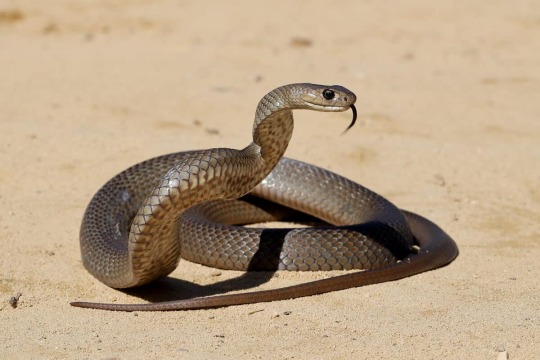
From the Billabong Sanctuary
#marine biology#omg#omgpage#deadly#nature#animals#dangerous#dailydoseofdeadly#snake#marine#brown snake#australia#antivenom#university of queensland
0 notes
Text

From Canada to Australia: Studying Nursing is a Dream Come True
I chose to study nursing in Australia for a few different reasons. I initially completed my undergraduate degree at Wilfrid Laurier University in Waterloo, Ontario, studying a Bachelor of Science in biology and psychology.
When I was applying for university programs in high school, I wasn’t quite sure what career I wanted to do, but knew I wanted it to be healthcare related. I was stuck between choosing pharmacy and nursing, so I decided to do a more general science degree so I could have more time to explore my options and find areas of science and health that I enjoyed. I took a variety of classes during my undergrad and graduated in 2021.
At this time, I still wasn’t sure what I wanted to do yet. A nurse I knew at the time suggested I try working at an organization in Ontario that coordinates in home and community-based care to get some experience working with different health care professionals. I ended up working on the short-stay team that coordinated nursing, OT, PT, SLP, SW, and dietician services for clients in the GTA. I received lots of insight from my team and ultimately decided nursing was the career I wanted to pursue.
#study in australia#australian nursing schools in australia#australian universities in australia#nursing degrees#nursing programs#how to become a nurse#study nursing#nursing in australia#university of queensland
0 notes
Text

Great news! Australian university applications are officially open!
Get started early for a strong application! We have all the tips!
If you’ve been waiting to get started on your future, there’s no time like the present! OzTREKK’s application season is officially open and we’re here to help you take this positive step forward.
Why Start Your OzTREKK Application Now?
Starting your application early helps us ensure it’s as strong as possible, and it helps you to feel confident throughout the entire application process.
Early applications also allow us time to assess your situation so we can determine where you’re most competitive. Don’t worry—this application will not be submitted to our universities just yet!
We’ll help you determine your eligibility and let you know if any admissions tests are required.
You’ll be giving yourself plenty of time to submit your application documents to OzTREKK and to find out if you’re missing any requirements—like a prerequisite—ahead of the deadlines.
You’ll know your application timelines in advance, like when to submit documents and anticipated start dates.
#study in australia#australian universities in australia#study abroad#australian universities#oztrekk#university of sydney#university of queensland#university of melbourne
0 notes
Text
Fake news exposed ....
Fake news outed - a new ANACONDA SPECIES has NOT been discovered by Bryan Fry and his gang of thieves …
WTF - ….. Taxonomic vandalism again by the Wuster gang of thieves….
Eunectes akayima Bryan Fry and cohort, 2024 is an illegally coined junior synonym of Eunectes gigas, Beebe, 1946.
Other than that, their ostensibly peer reviewed paper was great, because it further validated the genus Maxhoserboa Hoser, 2012, type species Eunectes notaeus Cope, 1862, with a proven divergence of 26 MYA.
Thanks team!
More at:
https://www.smuggled.com/Issue-12-36-39.pdf
#Eunectes#akiyama#notaeus#murinus#Anaconda#snake#new species#Maxhoserboa#new genus#Hoser#Bryan Grieg Fry#Bryan#Fry#University of Queensland
0 notes
Text
i've been touchibg so much grass
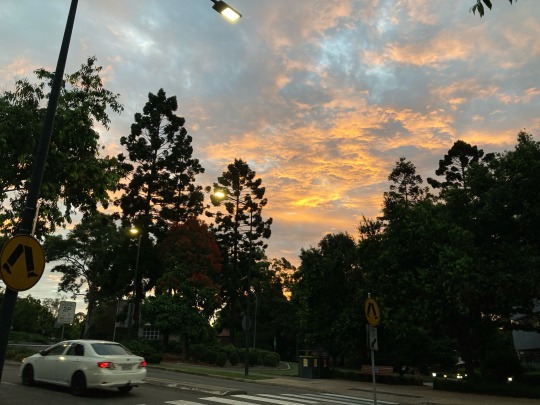
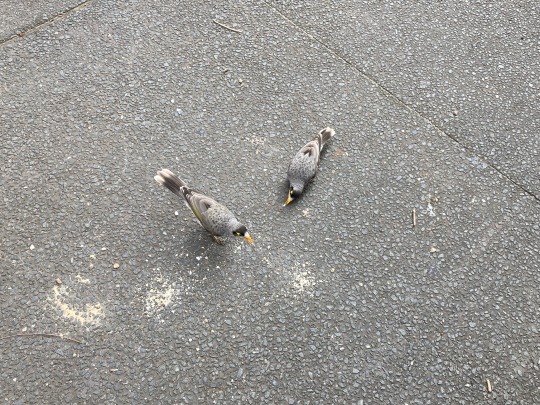

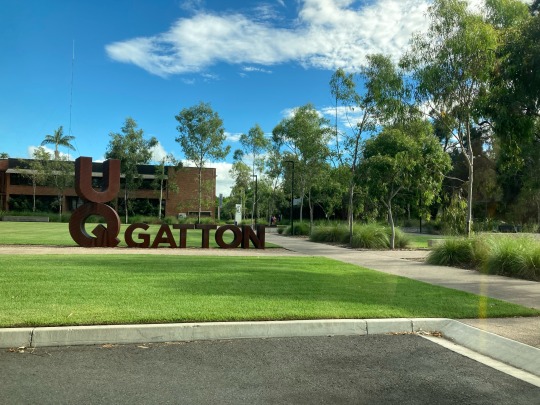


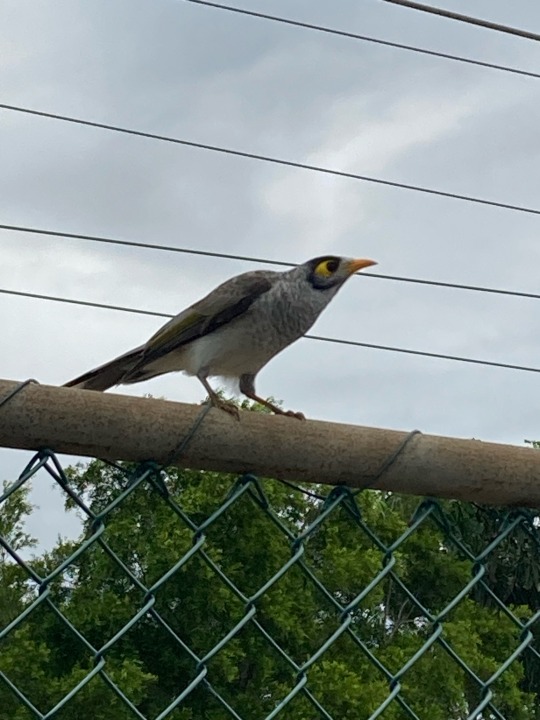
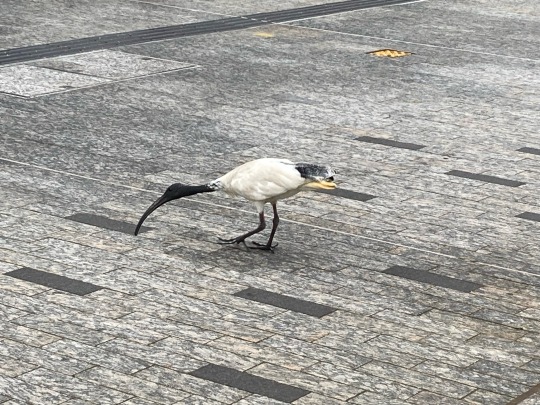

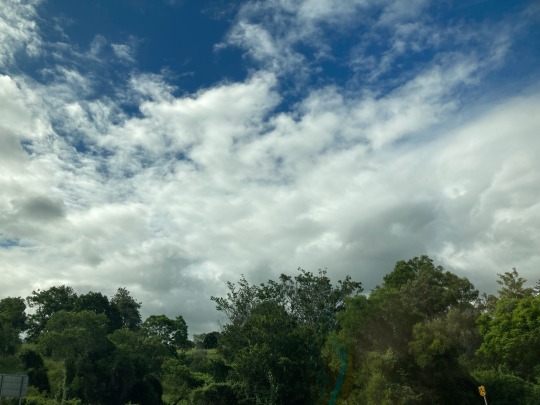
1 note
·
View note
Text

UQ announces new Dutton Park campus
The University of Queensland is cementing its presence in the rapidly growing biotechnology precinct in Brisbane’s south, announcing that an existing site will become UQ’s fourth campus: UQ Dutton Park.
Vice-Chancellor Professor Deborah Terry said that the Dutton Park campus is the primary teaching and research location for the UQ School of Pharmacy, which has been located at the site for more than a decade.
About the UQ Bachelor of Pharmacy (Honours)
In the Bachelor of Pharmacy (Honours) program, you’ll learn in dedicated laboratories, mock dispensaries, and simulated pharmacies at UQ’s state-of-the-art biomedical science centre, designed specifically for the teaching of pharmacy-related subjects and research.
With 3 integrated streams of study, you’ll develop knowledge and skills in pharmacy practice and medicines management; consultation and dispensing skills; pharmaceutical sciences; and social pharmacy and the health system.
Program: Bachelor of Pharmacy (Honours)
Location: Brisbane, Queensland
Semester intakes: February & July each year
Duration: 4 years**
**Application for credit
The UQ School of Pharmacy does not expect you to repeat learning that you’ve successfully completed at a similar level and standard elsewhere, where that work is substantially the same in content and standard as that required for the Bachelor of Pharmacy (Honours).
Many international students with prior study (especially with a science background) may be eligible to enter directly into Year 2 of the Bachelor of Pharmacy (Honours). If full credit is awarded, you may be able to undertake an additional course in your first and second semesters of enrollment so you can complete the program in 3 years.
Undergraduate-entry students beginning in July can complete the program in 3.5 years due to the use of 2 summer semesters.
#university of queensland#pharmacy school#uq school of pharmacy#pharmacy degrees#bachelor of pharmacy#study in australia#australian pharmacy schools in australia
0 notes
Text

Honeybees can recognize human faces. In a study conducted at the University of Queensland, researchers trained honeybees to associate a sugar reward with pictures of human faces. The bees were able to remember and recognize the faces, even when presented with a mix of familiar and unfamiliar ones. This surprising ability showcases the cognitive complexity of these tiny insects.
0 notes
Text

Q & A with a Canadian UQ Medical School Graduate
Let us introduce you to Jeff, a Canadian who decided to pursue his medical degree at an Australia medical school.
We asked him a few questions about his experience studying medicine at The University of Queensland, including why he chose UQ, what clinical rotations are really like, and what his top advice for future med students is—and here’s what he had to say!
Tell us about yourself! Where and what you studied before going to UQ for med, why you wanted to become a doctor, fun hobbies or interests, etc.
I am originally from a suburb just north of Toronto, Ontario. After high school, I attended the University of Ontario Institute of Technology (now called Ontario Tech University) for a Bachelor of Health Science with Honours. During my undergraduate degree, I joined my university’s Campus Emergency Response Team, and started providing medical care on the campus to those in need. This opened my eyes to how much I enjoyed medicine and caring for others and put me on the path toward medical school applications.
In my final year of study there, I sat my MCAT and applied to medical schools in Ontario only. After being unsuccessful in that application, I applied to and completed a Master of Science in Kinesiology and Health Science, and a concurrent Graduate Diploma in Neuroscience at York University. In my final year of study, I resat my MCAT and reapplied to medical schools, this time branching outside of Ontario to additional Canadian schools, as well as medical schools in Australia, eventually ending up here in Australia at the University of Queensland for medical school.
Keep reading!
#study in australia#doctor of medicine#study medicine#university of queensland#medical school#medical schools in australia#medical student#international medical graduate#uq md#Doctor of medicine#md program
1 note
·
View note
Link
Researchers at the University of Queensland have found a species of worm with an appetite for polystyrene could be the key to plastic recycling on a mass scale.
Scientists discovered the common Zophobas morio 'superworm' can eat through polystyrene, thanks to a bacterial enzyme in their gut.
Dr Chris Rinke and his team from UQ's School of Chemistry and Molecular Biosciences fed superworms different diets over a three week period, with some given polystyrene foam, some bran and others put on a fasting diet.
"We found the superworms fed a diet of just polystyrene not only survived, but even had marginal weight gains," Dr Rinke said.
"This suggests the worms can derive energy from the polystyrene, most likely with the help of their gut microbes."
The researchers used a technique called metagenomics to find several encoded enzymes with the ability to degrade polystyrene and styrene.
Read more.
#Materials Science#Science#Plastics#Polymers#Waste#Worms#Enzymes#Polystyrene#Recycling#University of Queensland
68 notes
·
View notes
Text
University Of Queensland Courses
The University of Queensland (UQ) is a shining example of academic excellence, offering a wide range of programs to meet the educational goals of college students from all backgrounds. Nestled in the vibrant city of Brisbane, Australia, the university has gained a reputation as one of the world’s finest universities. This post will take a detailed look at the courses offered by UQ and what makes them exceptional!
0 notes
Text
Can India Global Leaders Scholarship Benefit in Studying in Australia?
Any student who wishes to study in the University of Queensland can apply for higher education with The India Global Leaders Scholarship. Learn about its eligibility criteria, benefits, documents, and selection criteria.
Full Story
#University of Queensland#University of Queensland admission#University of Queensland scholarship#study abroad benefits#study in australia#Australian Universities#top colleges in australia#Australia study abroad consultant#study abroad#study abroad in australia#education consultant#overseas education#foreign university#apply for Australia
0 notes
Link
Causal Discovery in the Quantum Context
This talk introduces quantum causal modelling and describes existing quantum causal discovery methods. Important distinctions between familiar classical causal concepts and their quantum counterparts will be discussed, and example use cases for quantum causal discovery presented. Some potential opportunities for classical causal discovery experts to contribute to this fledgling field will also be outlined.
0 notes